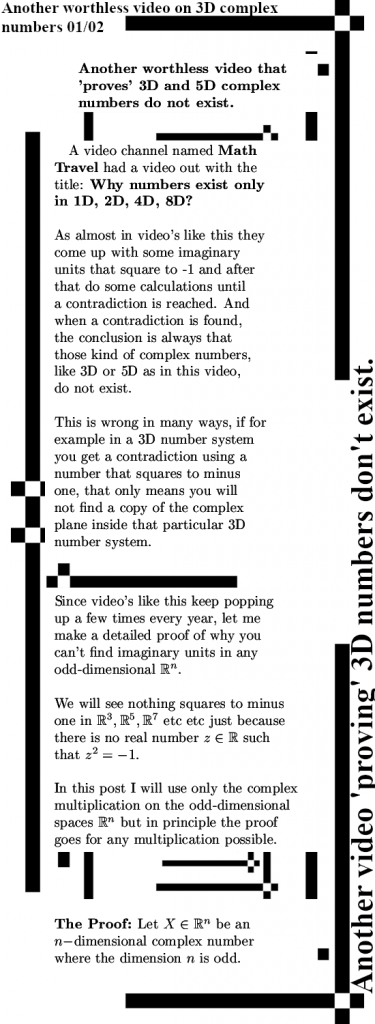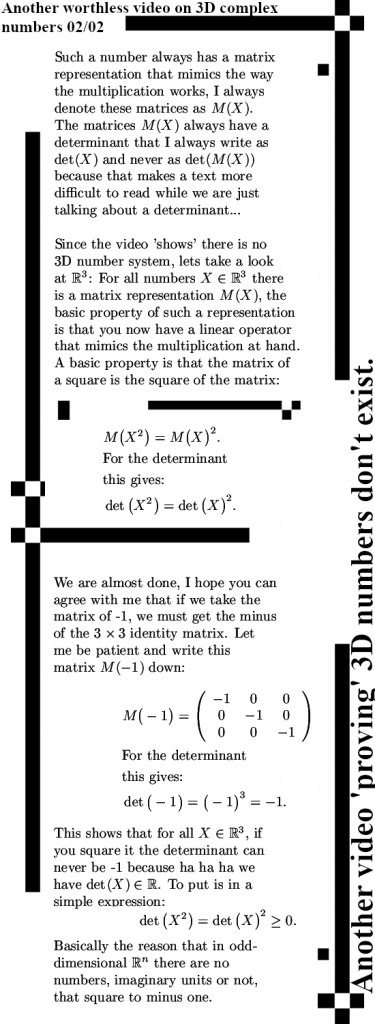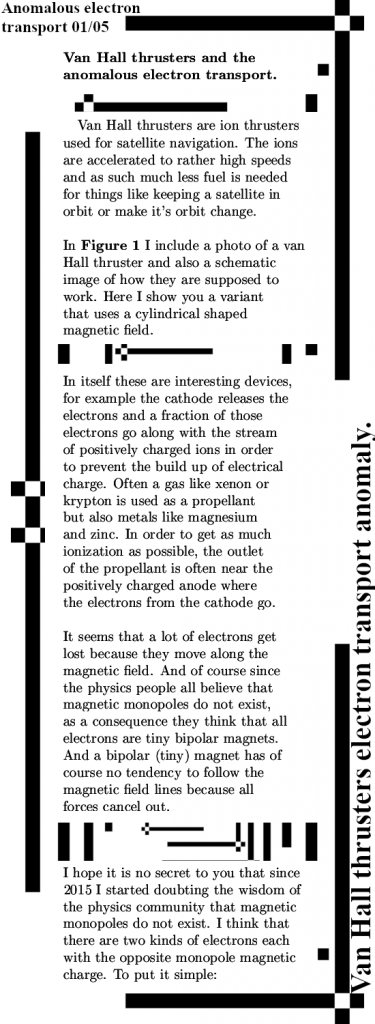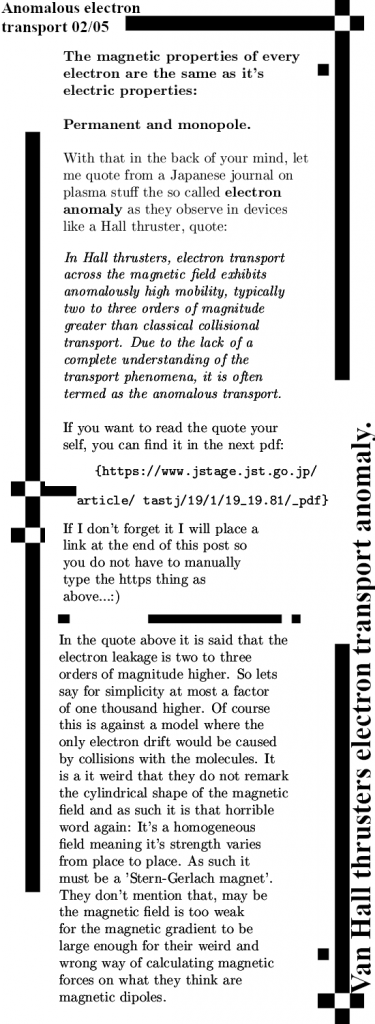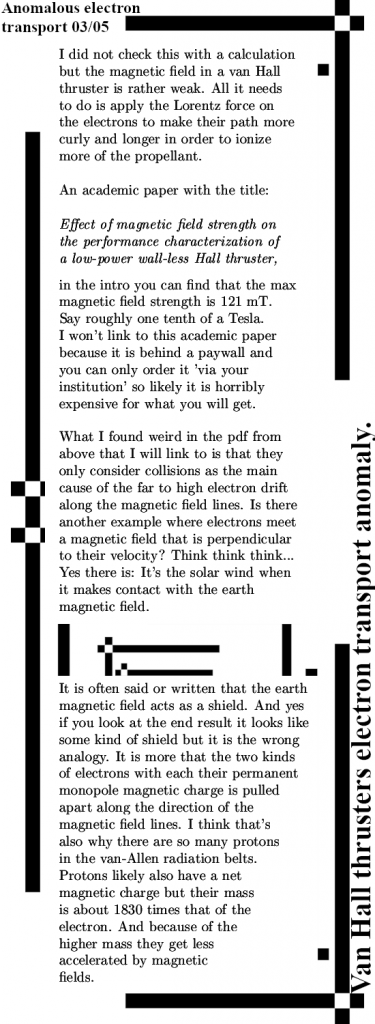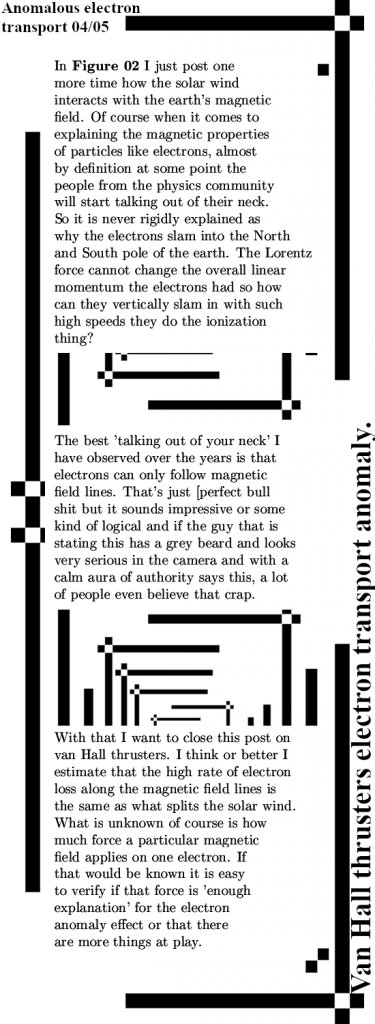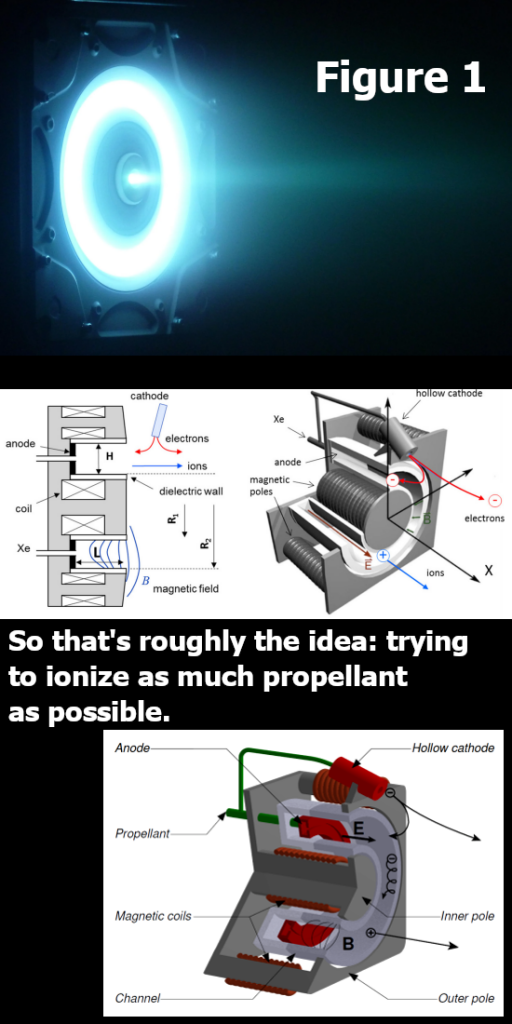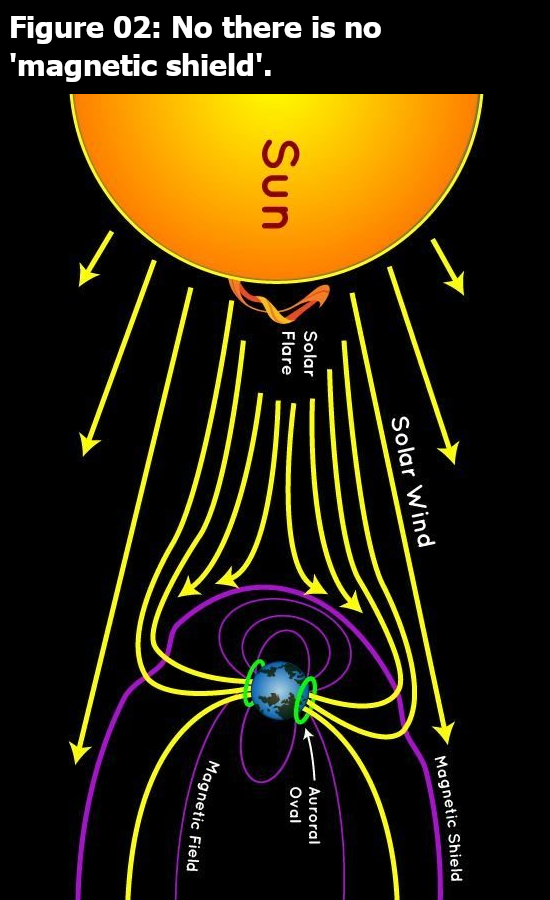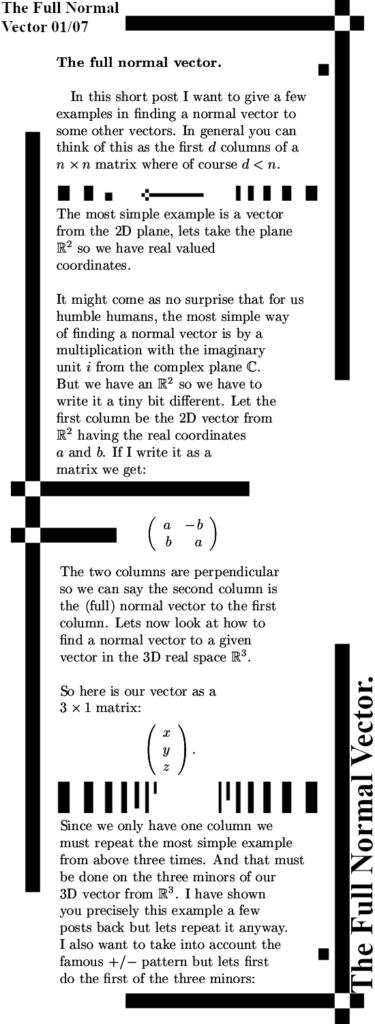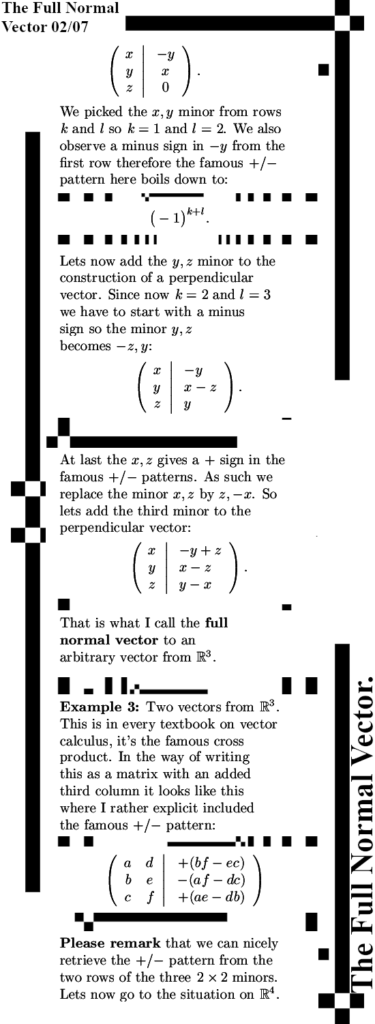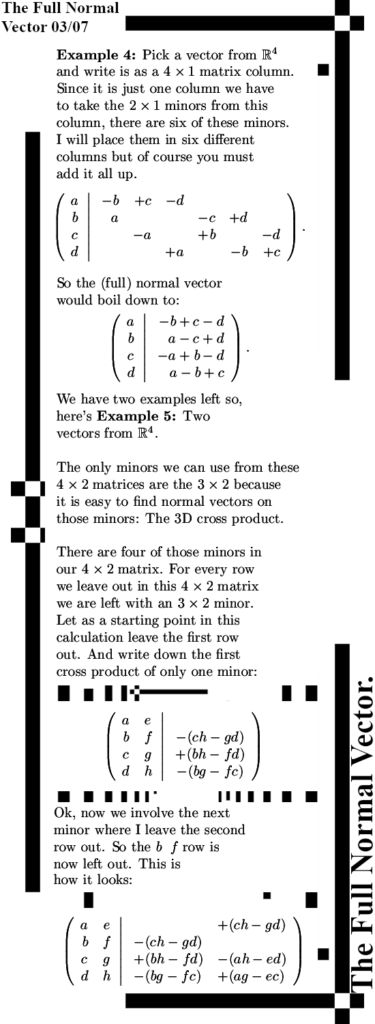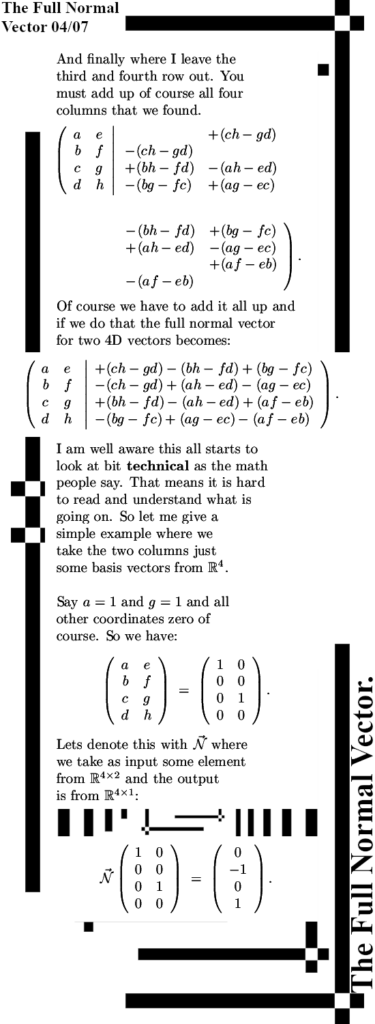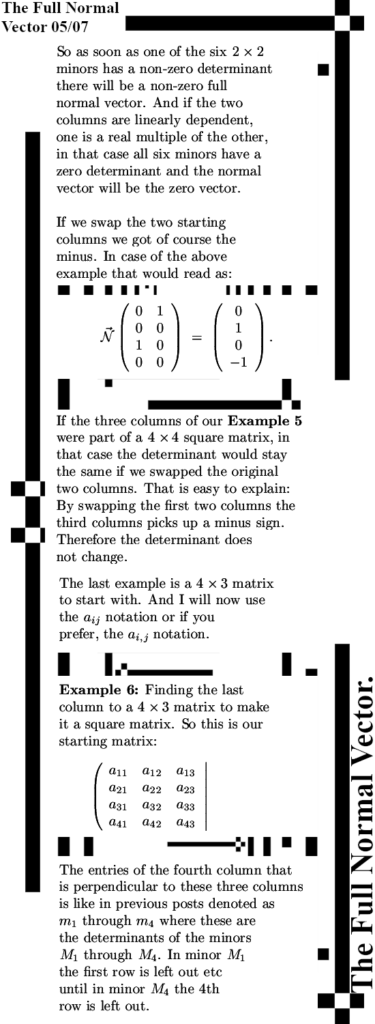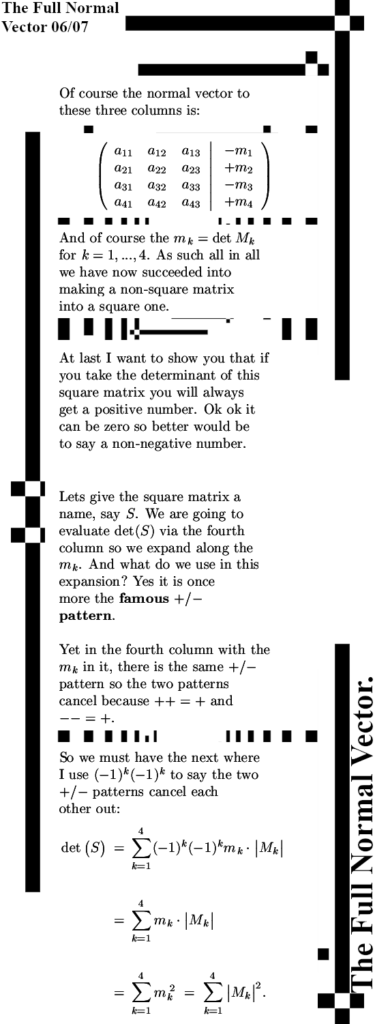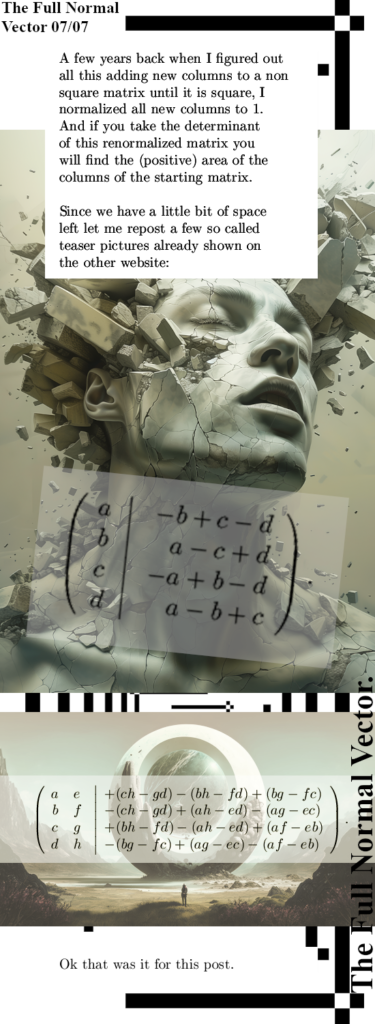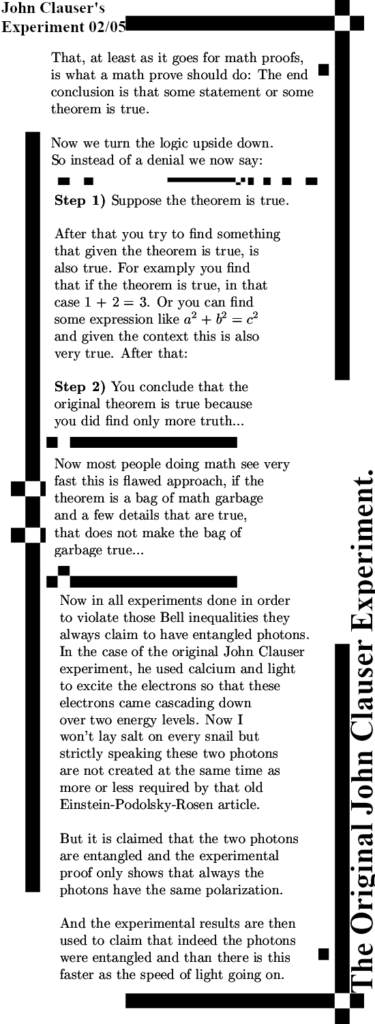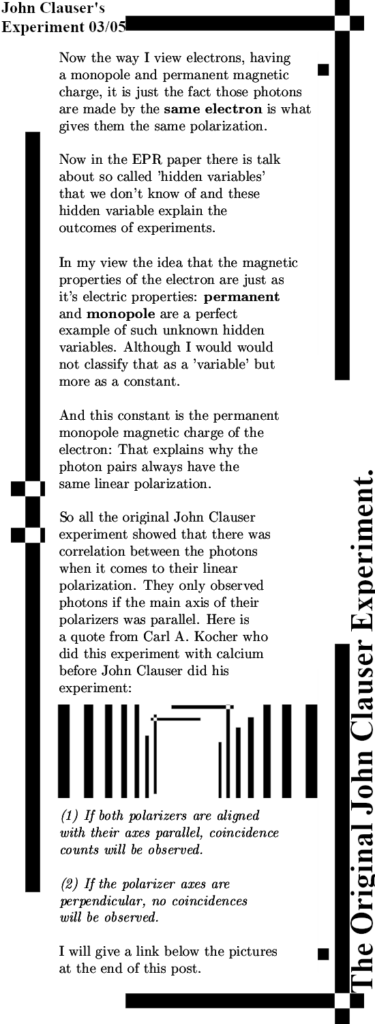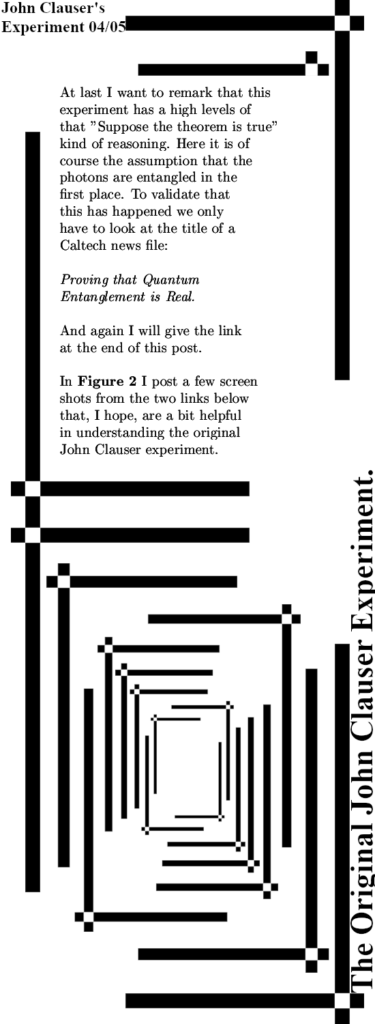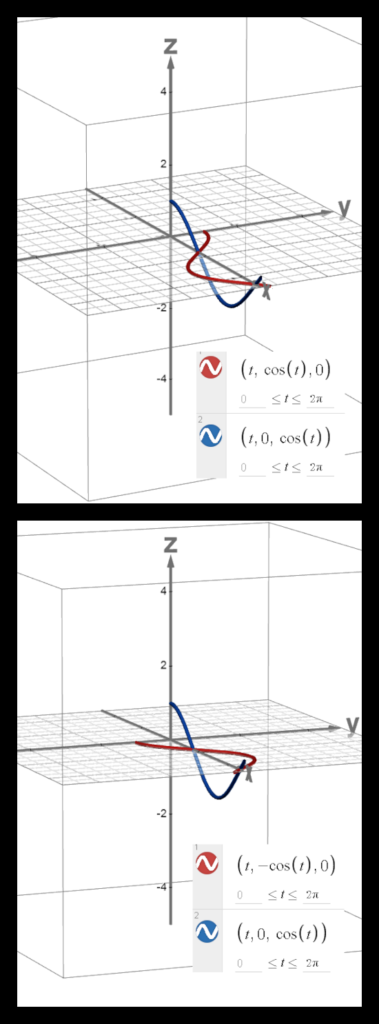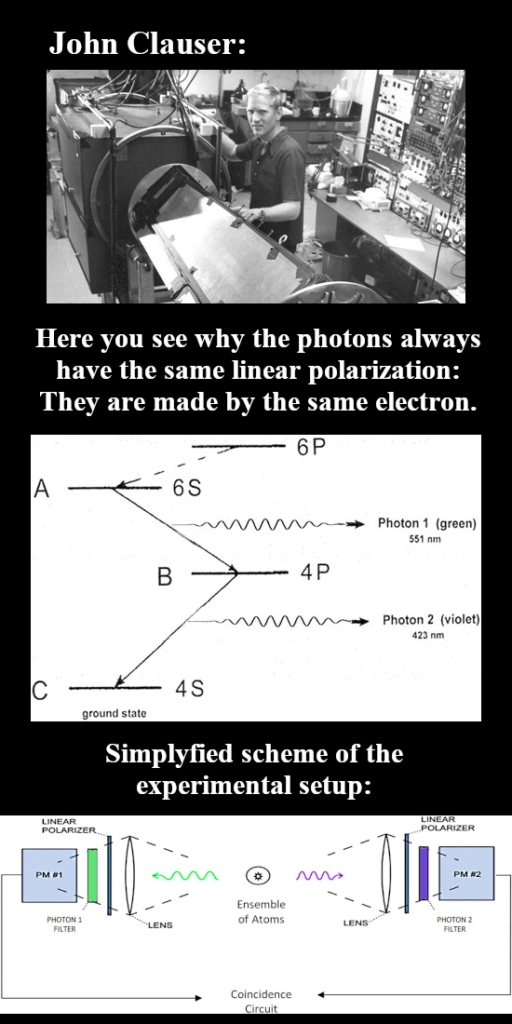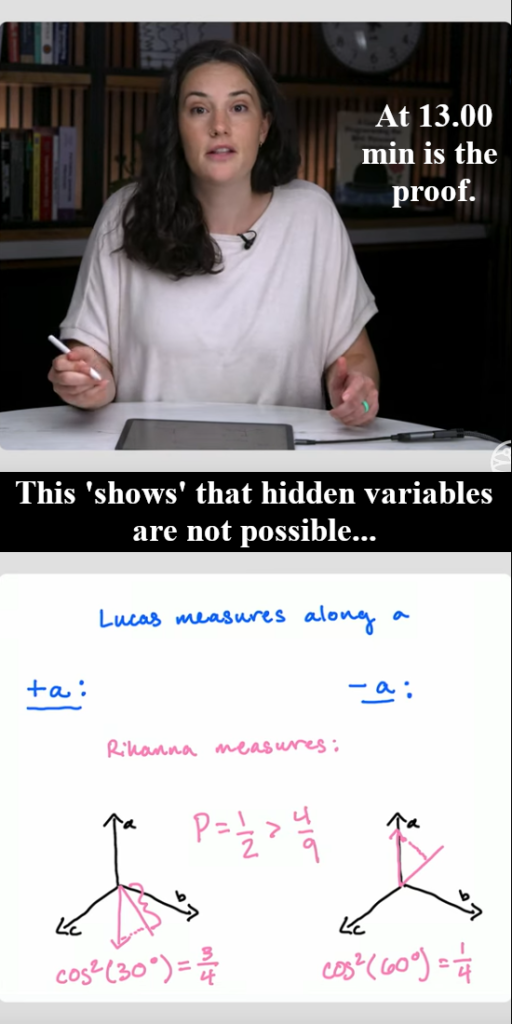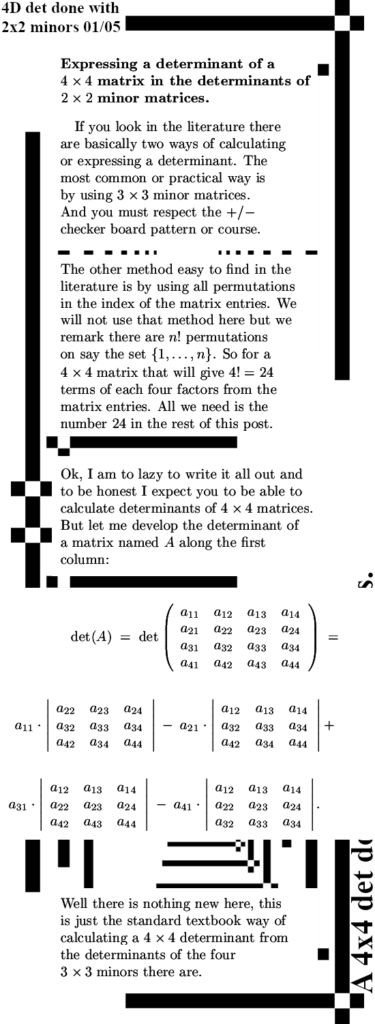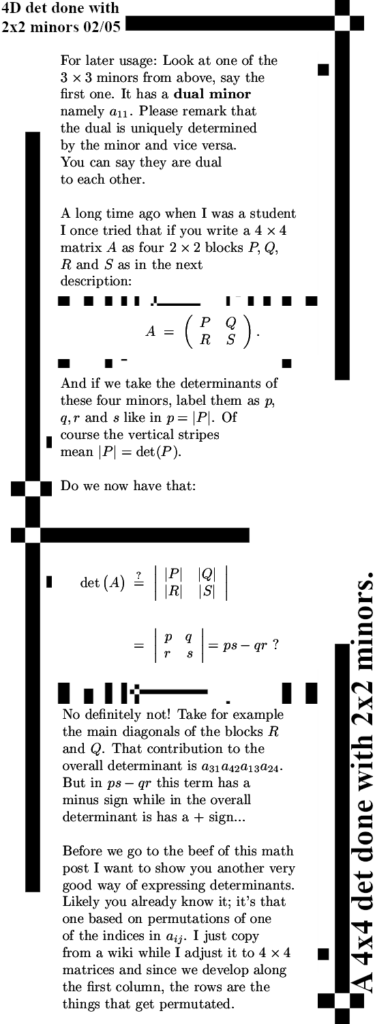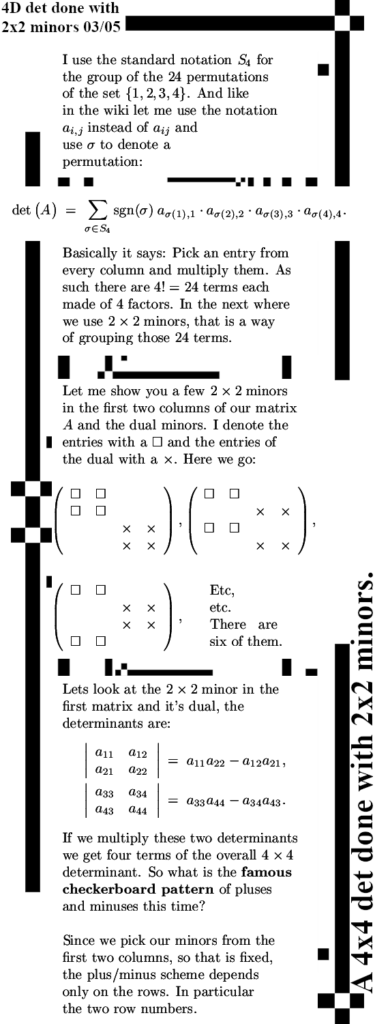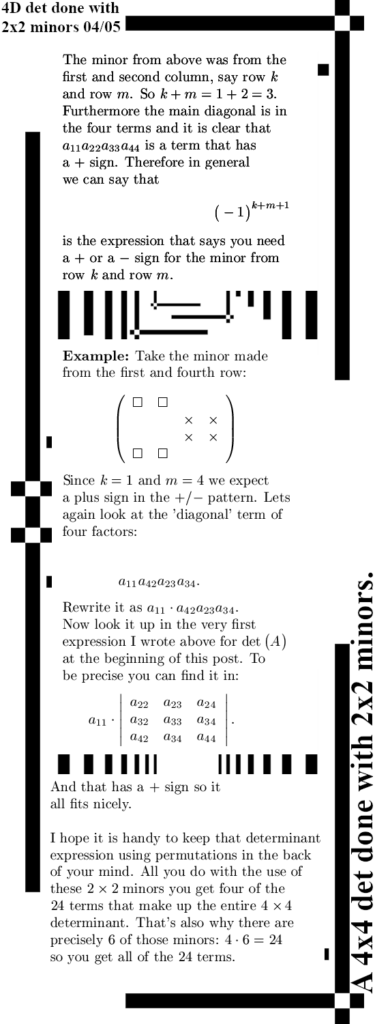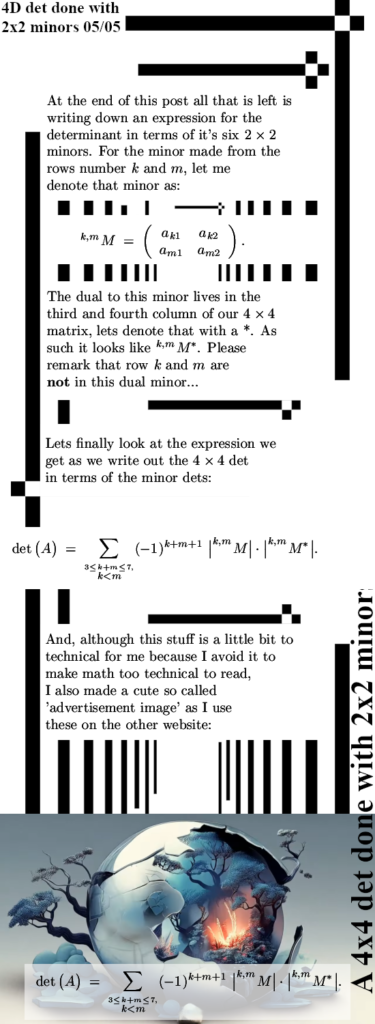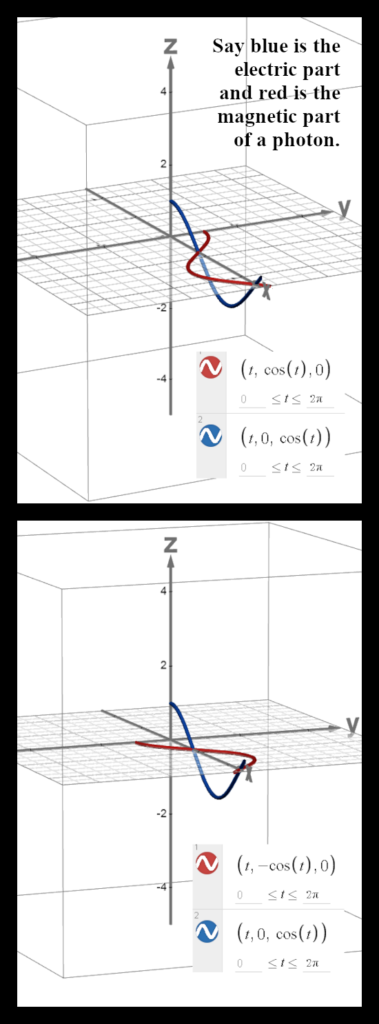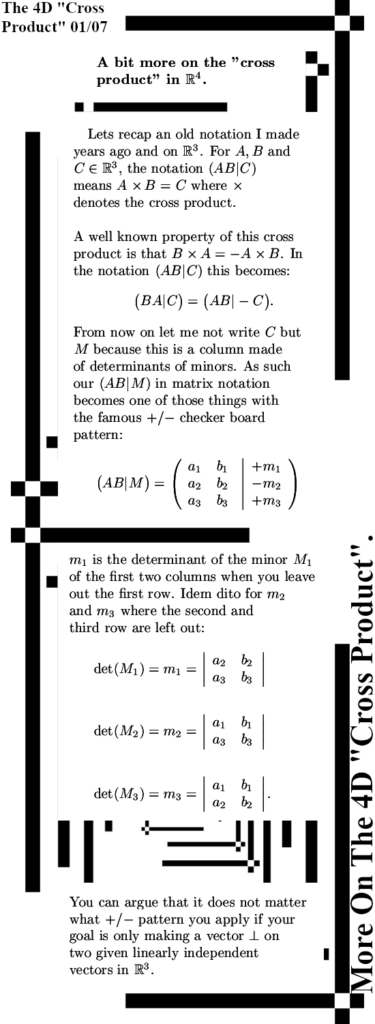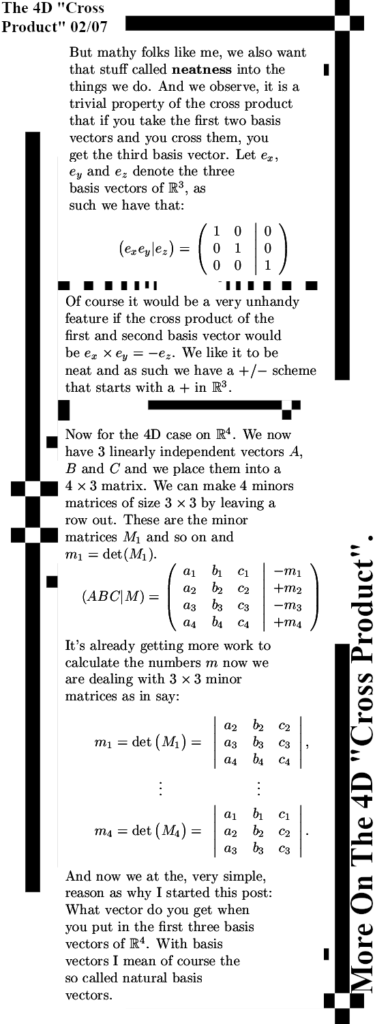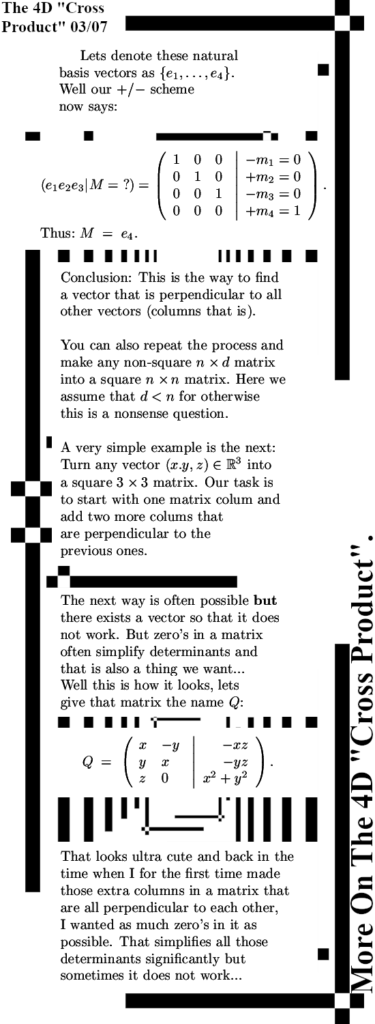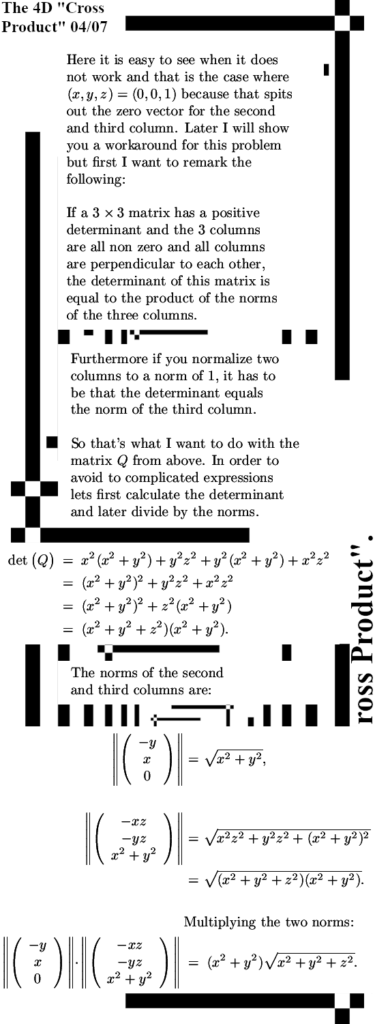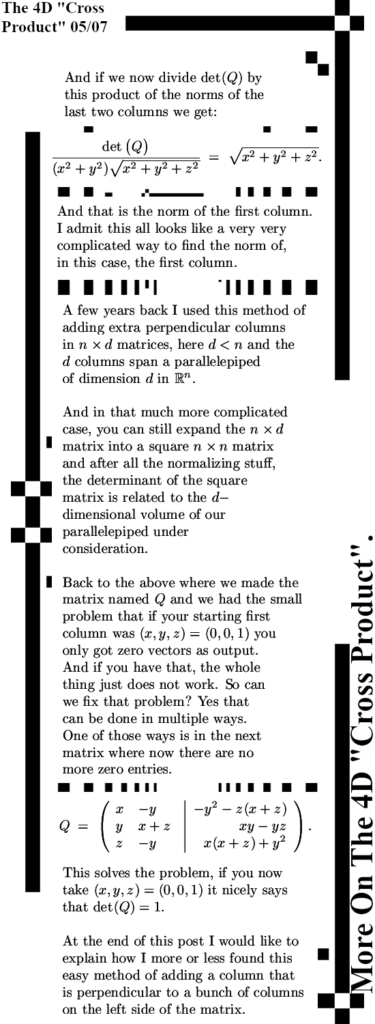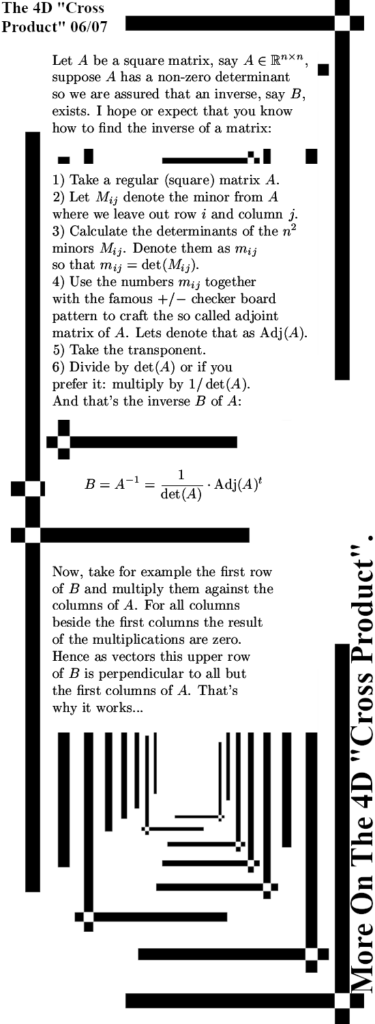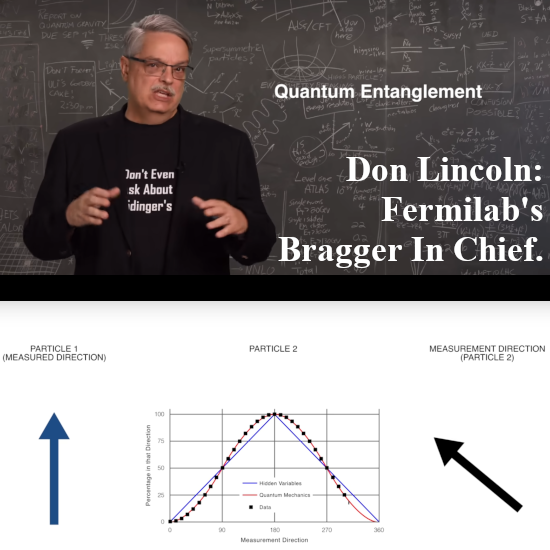A few years back Nobel prizes were rewarded for all that ‘faster than light’ stuff related to entangled particles (or photons) and the weird belief that particles far apart can more or less instantly communicate with each other.
Last year 2025 (by the way happy new year) we looked in details to the first experiment from John Clauser who used cascading electrons to generate pairs of photons and he got the Nobel prize because he showed that those photons always have the same linear polarization.
Since the year 2015 I started seriously doubting that electrons are indeed tiny bipolar magnets as a possibility to explain the results from the Stern-Gerlach experiment from the year 1922. Back in the time when people tried to explain this result of Otto Stern and Walter Gerlach in the letters they did send to each other it often started with the Gauss law for magnetism and that they ‘should find a solution within this framework of the Gauss law’.
So it never dawned on them that instead of finding a solution within this Gauss framework (magnetic monopoles do not exist) their scientific task should have been: Checking if the Gauss law for magnetism is indeed valid for unpaired electrons. After all, electrons being magnetic monopoles is indeed a perfect explanation for the Stern-Gerlach experiment. But no they did not do it, no one dared to take on the Gauss law that after all is just a fancy piece of math not rooted in any experimental evidence.
That is why even today in this new year 2026 we have crazy stuff like electrons that anti-align themselves with an applied external magnetic field like they did in the SG experiment explanation. And the most crazy thing in my view is the official version of the electron pair where the present day belief is still that because of the Pauli exclusion principle the electrons must have different spin numbers while in practice this simply means the two tiny magnets somehow must be anti-aligned to form a pair while from chemistry we know that electron pairs are very important in keeping molecules together.
But let me stop ranting against the belief that magnetic monopoles do not exist and turn to the beef of why I selected this video: It is all that Bell theorem stuff that says or validates all those ‘faster than light’ kind of collapsing of the wave function that they think actually happens. There is an old proof out that proves that Einstein’s idea’s of so called hidden variables cannot be true. It was only last year in 2025 that I looked into that and guess what? This proof uses the results of a repeated or sequential Stern-Gerlach experiment that gives all those probabilities for measuring electron spin. There is only one little pesky detail: In a century of time there has never ever such an experiment done. And if my idea’s of simply electrons having a permanent magnetic charge, just like their electric charge, are true, in that case measuring electron spin is the same as measuring the electric charge of the electron: It will always be the same no matter what. So that is why John Clauser always had the same linear polarization in his pairs of photons, the root cause or the ‘hidden variable’ if you want to frame it that way of finding always equal linear polarity is that the photons are made by the same electron. You really don’t need all this ‘faster as light’ crazy stuff to explain the outcome of the experiment John Clauser did.
I am more or less planning to look in this new year a bit deeper into all those other experiments done that show the ‘faster than light’ weirdo stuff but almost all experiments use crystals that do the parametric down conversing thing and break down one photon into two lower photons with opposite linear polarization. In my view the only logical explanation using electron permanent monopole properties is that an electron pair gets ejected into a higher energy state and later falls down and as such it will always generate an electron pair with opposite linear polarization.
But lets turn to the video: If electron spin is just a permanent monopole magnetic charge, in that case measuring electron spin is not probabilistic at all and as such the ‘proof’ as presented in the video is clear cut wrong. You can find the video at the end, this post is 3 images and one extra so called Figure 1. Here we go:
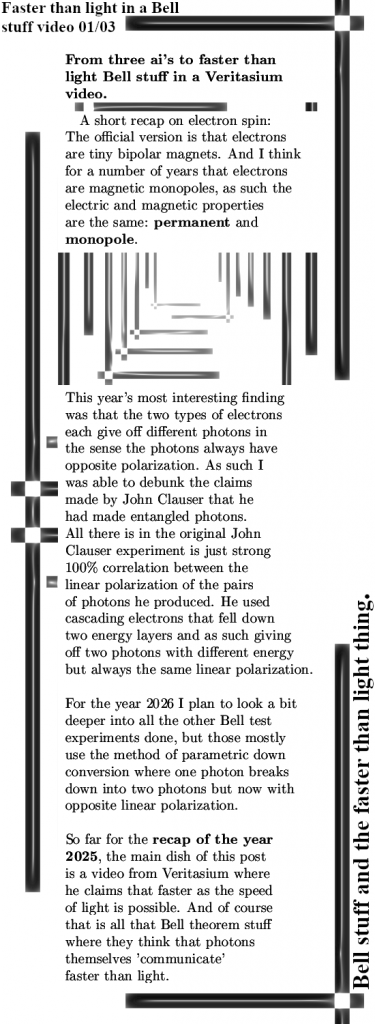
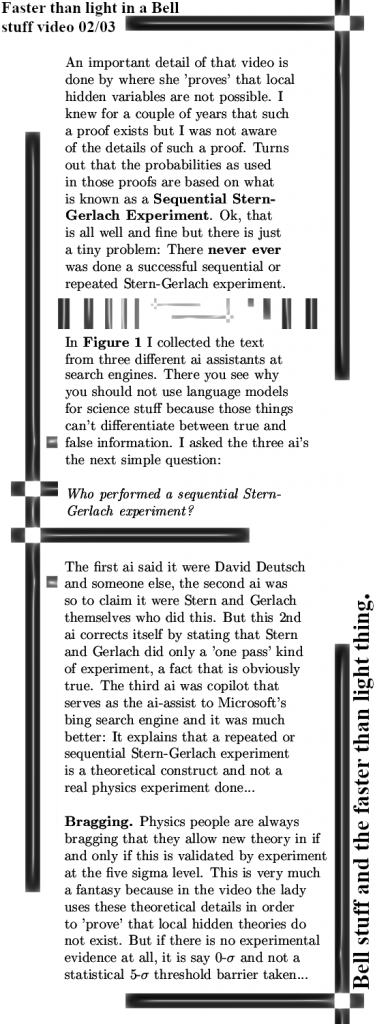
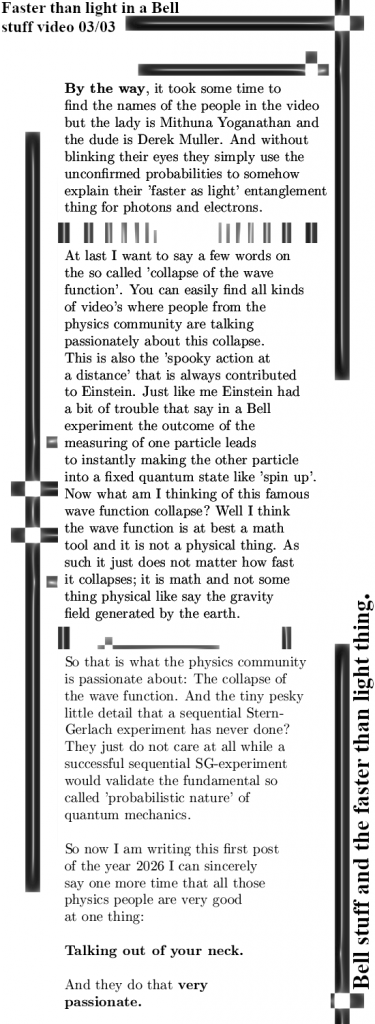
Furthermore if electron spin is a permanent monopole feature and depending on the kind of magnetic charge is what gives the two opposite polarization states of the photons they produce. As such the photon pairs as mentioned in the video are never in a superposition let alone that measuring one photon’s polarization leads to a collapse of the wave function and forces the other photon to take on the opposite (linear) polarization. And as such there is no ‘faster than light’ stuff going on at all.

And finally the video:
It has to be remarked that both Mithuna Yoagnathan and Derek Muller do nothing strange here. All physics professionals believe this kind of weird stuff to the extend there are even Nobel prizes handed out for this kind of crap. So both Mithuna and Derik are nice people and do only what is accepted as truth. Even the usage of these faulty probabilities related to a sequential or repeated Stern-Gerlach experiment is what they all do while bragging that physics is the only five-sigma science…
Well no it just isn’t, never ever a sequential Stern-Gerlach experiment was performed there is also zero experimental validation for their fantasy that monopoles are tiny bipolar magnets. Another very fundamental piece of experimental validation that is missing is that if it was true that electrons are tiny magnets, in that case they will not be accelerated by a constant homogeneous magnetic field. That is a cornerstone of their thinking but once more: Where is that fucking experimental validation for this?
